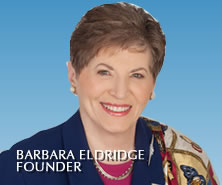Sales is convincing, overcoming objections, and getting a check. You’re doing the talking.
Marketing is the process of generating leads that get you in front of those prospects.
Branding is influencing, pre-selling. Branding appeals to desires and touches emotions. Its first goal: to emotionally predispose consumers into entering a business relationship with you.
Today, we live in a skeptical culture – a culture that doesn’t want to be sold anything. When your branding is done correctly, the sale is made virtually without effort. Prospects arrive “pre-sold.”
Branding doesn’t happen right out of the box. As your own marketer you have to be heard over the marketing noise that is everywhere, (TV, newspapers, on every street corner, now even at the movies). You then have to overcome the skepticism of the more sophisticated consumer.
Your Biggest Challenge – to become the business choice for more people in your niche before they need you? What are the strategies that will get you there?
Visibility builds credibility in the eyes of the consumer. If we see something all over town, we get the impression it must be good. – its presence attests to its success. The strategy to developing your brand is to identify your attributes, values and passions and learn how to use them in today’s market so people recognize you and trust you.
Your Brand Is An Intangible Asset That Is Critical To Driving Your Business Success And Success Requires Collaboration.
There are two clients in Mind Masters that understand what that means. Jonni Bailey of Ruff Haus Design (www.rufhaus.com) and Mike Mance of Mance Creative (www.mancecreative.com). As graphic designers they need to sit down with clients and learn something that they are and something that they live in order to develop an integrated concept of design, packaging and promotion to propel the total marketing of a brand.
To begin that process you must:
1. Identify your core values, (they should be unique, based on your experience, essential to how you conduct yourself and universal so that they apply in all circumstances).
2. Classify the attributes that you want to accentuate to your audience.
3. How do your customers/clients describe you? What are customers saying about you and the service you provide?
“The brand must be perceived as truly special, with attributes unique enough to create a strong and lasting value proposition. Otherwise, when money is tight, consumers will make a necessary if unpleasant choice: They simply won’t buy ….” Barry Silverstein, SBA Newsletter, March 2008

